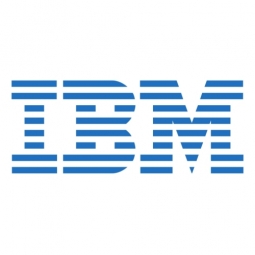Technology Category
- Application Infrastructure & Middleware - Database Management & Storage
- Infrastructure as a Service (IaaS) - Cloud Storage Services
Applicable Industries
- Electrical Grids
- Retail
Applicable Functions
- Facility Management
Use Cases
- Microgrid
- Retail Store Automation
Services
- Hardware Design & Engineering Services
About The Customer
CERN, the European Organization for Nuclear Research, is a renowned scientific institution dedicated to understanding the universe. It operates the world's largest and most powerful particle collider, the Large Hadron Collider (LHC), which is contained in a 27-kilometer circular tunnel running under France and Switzerland. The LHC accelerates particles to more than 99.9 percent the speed of light, generating energies never reached before. The data generated by the LHC experiments is analyzed by thousands of particle physicists across the globe in collaboration with CERN. The organization manages a massive data archive and relies on a distributed environment of computer centers worldwide to distribute and analyze the data.
The Challenge
CERN, the European Organization for Nuclear Research, is tasked with managing an enormous data archive of 100 petabytes, a volume that nearly doubles as 13 large data centers worldwide receive partial copies of the data. The data is generated by the Large Hadron Collider (LHC), the world’s largest and most powerful particle collider, which is used to reconstruct the first moments of the universe to gain a better understanding of physical laws. The LHC generates more than 25 petabytes of data in the four main LHC experiments, even with drastic data filtering protocols in place. CERN does not have the computing capacity required to analyze the data, so it relies on a distributed environment consisting of 160 different computer centers located in 45 countries to distribute data to its scientists. The biggest challenge is the constant influx of data, more than a gigabyte per second, which needs to be stored, preserved in the long term, and made accessible to several thousand physicists worldwide.
The Solution
CERN utilizes IBM Tivoli Storage Manager Software, along with IBM enterprise-class tape hardware, to store, safeguard and provide real-time accessibility to petabytes of its data. The LHC computing grid works on a three-layered model. Primary copies of the data captured in LHC are stored at CERN with second copies being bulk processed at Tier-1 centers, typically national labs. The processed data is finally shared with physicists for interaction at Tier-2 centers, which are university departments located in 45 countries. A significant part of the infrastructure for long-term data storage and near-real-time accessibility at CERN is based on IBM enterprise-class tape hardware, including IBM TS3500 tape libraries and IBM TS1140 tape drives. It also leverages IBM Tivoli Storage Manager software. Today, IBM tape media accounts for approximately 50 percent of the organization’s tape volume. The Tivoli storage platform allows CERN to quickly restore the configuration and the data of any machines in the data center that may have experienced hardware or data failure.
Operational Impact
Quantitative Benefit

Case Study missing?
Start adding your own!
Register with your work email and create a new case study profile for your business.
Related Case Studies.

Case Study
Improving Production Line Efficiency with Ethernet Micro RTU Controller
Moxa was asked to provide a connectivity solution for one of the world's leading cosmetics companies. This multinational corporation, with retail presence in 130 countries, 23 global braches, and over 66,000 employees, sought to improve the efficiency of their production process by migrating from manual monitoring to an automatic productivity monitoring system. The production line was being monitored by ABB Real-TPI, a factory information system that offers data collection and analysis to improve plant efficiency. Due to software limitations, the customer needed an OPC server and a corresponding I/O solution to collect data from additional sensor devices for the Real-TPI system. The goal is to enable the factory information system to more thoroughly collect data from every corner of the production line. This will improve its ability to measure Overall Equipment Effectiveness (OEE) and translate into increased production efficiencies. System Requirements • Instant status updates while still consuming minimal bandwidth to relieve strain on limited factory networks • Interoperable with ABB Real-TPI • Small form factor appropriate for deployment where space is scarce • Remote software management and configuration to simplify operations

Case Study
Digital Retail Security Solutions
Sennco wanted to help its retail customers increase sales and profits by developing an innovative alarm system as opposed to conventional connected alarms that are permanently tethered to display products. These traditional security systems were cumbersome and intrusive to the customer shopping experience. Additionally, they provided no useful data or analytics.

Case Study
Hydro One Leads the Way In Smart Meter Development
In 2010, Ontario’s energy board mandated that time-of-use (TOU) pricing for consumers be available for all consumers on a regulated price plan. To meet this requirement, Hydro One needed to quickly deploy a smart meter and intelligent communications network solution to meet the provincial government’s requirement at a low cost. The network needed to cover Hydro One’s expansive service territory, which has a land mass twice the size of Texas, and its customers live in a mix of urban, rural, and remote areas, some places only accessible by air, rail, boat or snowmobile. Most importantly, the network needed to enable future enterprise-wide business efficiencies, modernization of distribution infrastructure and enhanced customer service. To meet these needs, Hydro One conceptualized an end-to-end solution leveraging open standards and Internet Protocols (IP) at all communication levels. The utility drew upon industry leaders like Trilliant to realize this vision.

Case Study
How Sirqul’s IoT Platform is Crafting Carrefour’s New In-Store Experiences
Carrefour Taiwan’s goal is to be completely digital by end of 2018. Out-dated manual methods for analysis and assumptions limited Carrefour’s ability to change the customer experience and were void of real-time decision-making capabilities. Rather than relying solely on sales data, assumptions, and disparate systems, Carrefour Taiwan’s CEO led an initiative to find a connected IoT solution that could give the team the ability to make real-time changes and more informed decisions. Prior to implementing, Carrefour struggled to address their conversion rates and did not have the proper insights into the customer decision-making process nor how to make an immediate impact without losing customer confidence.

Case Study
Selling more with Whirlpool
Whirlpool wanted to add connectivity to appliances and transform the company's relationship with customers. Traditionally, Whirlpool interaction with customers was limited to purchases made once every ten years. Connected washer and dryers provide exciting new features like remote management of start times and inter-machine communication.








